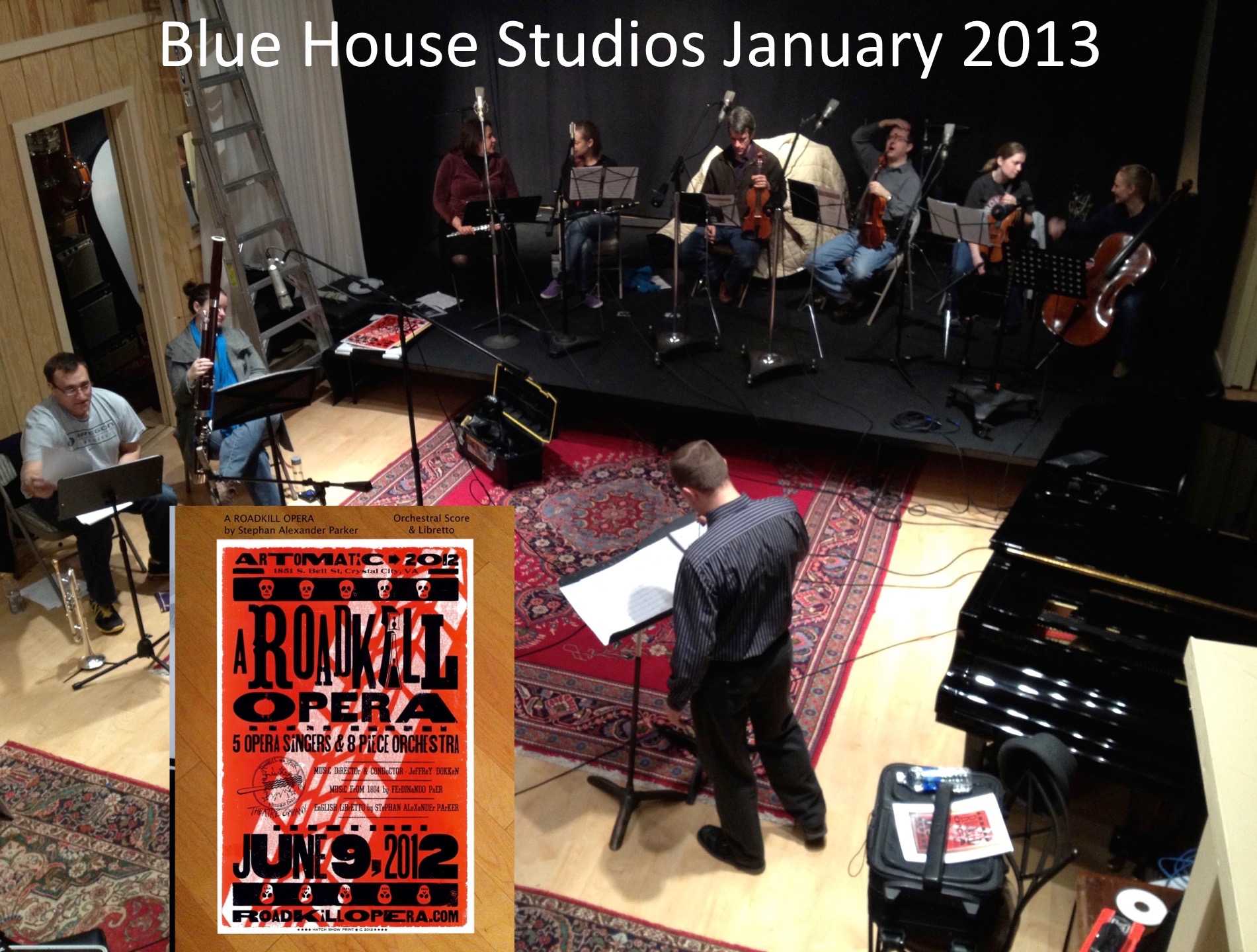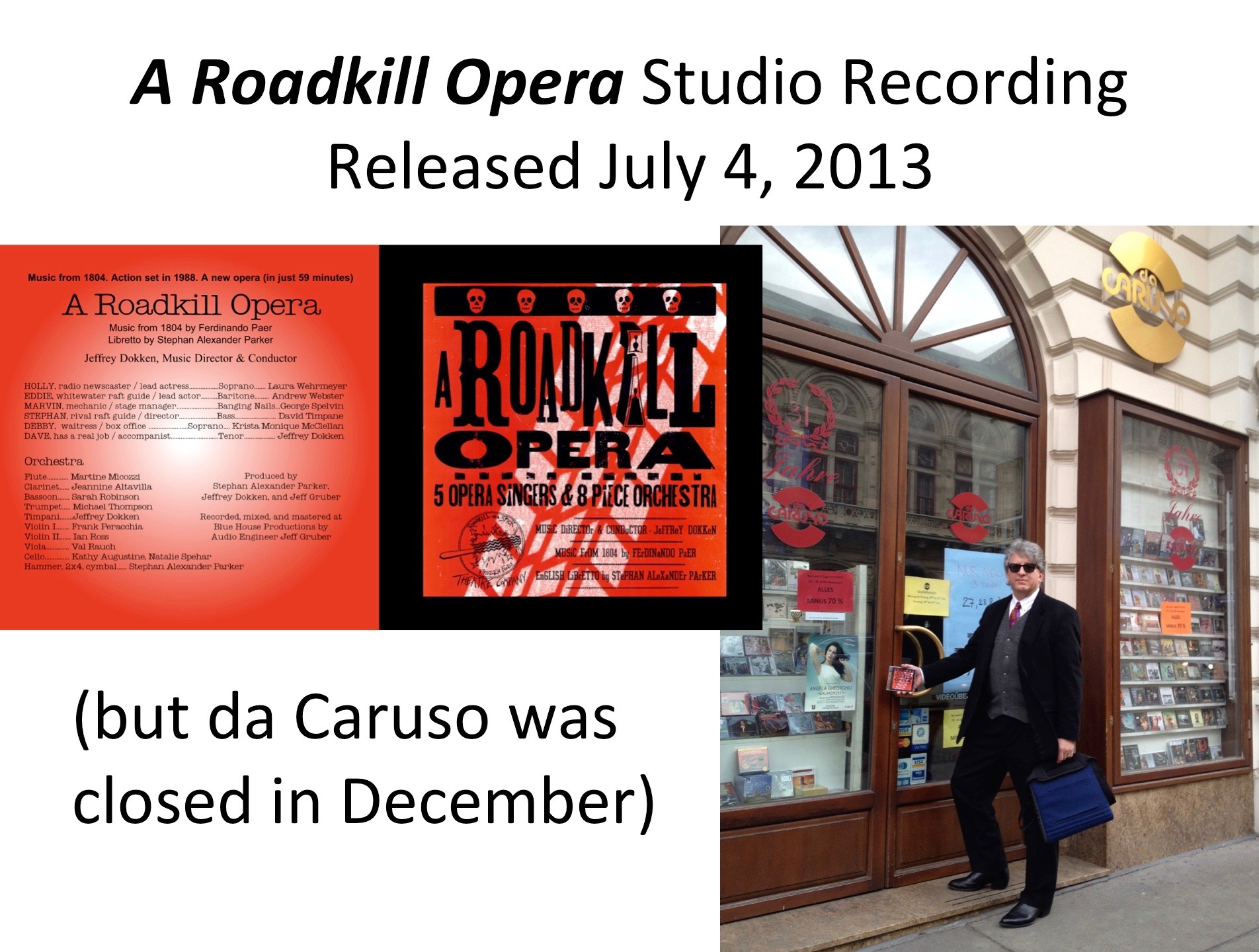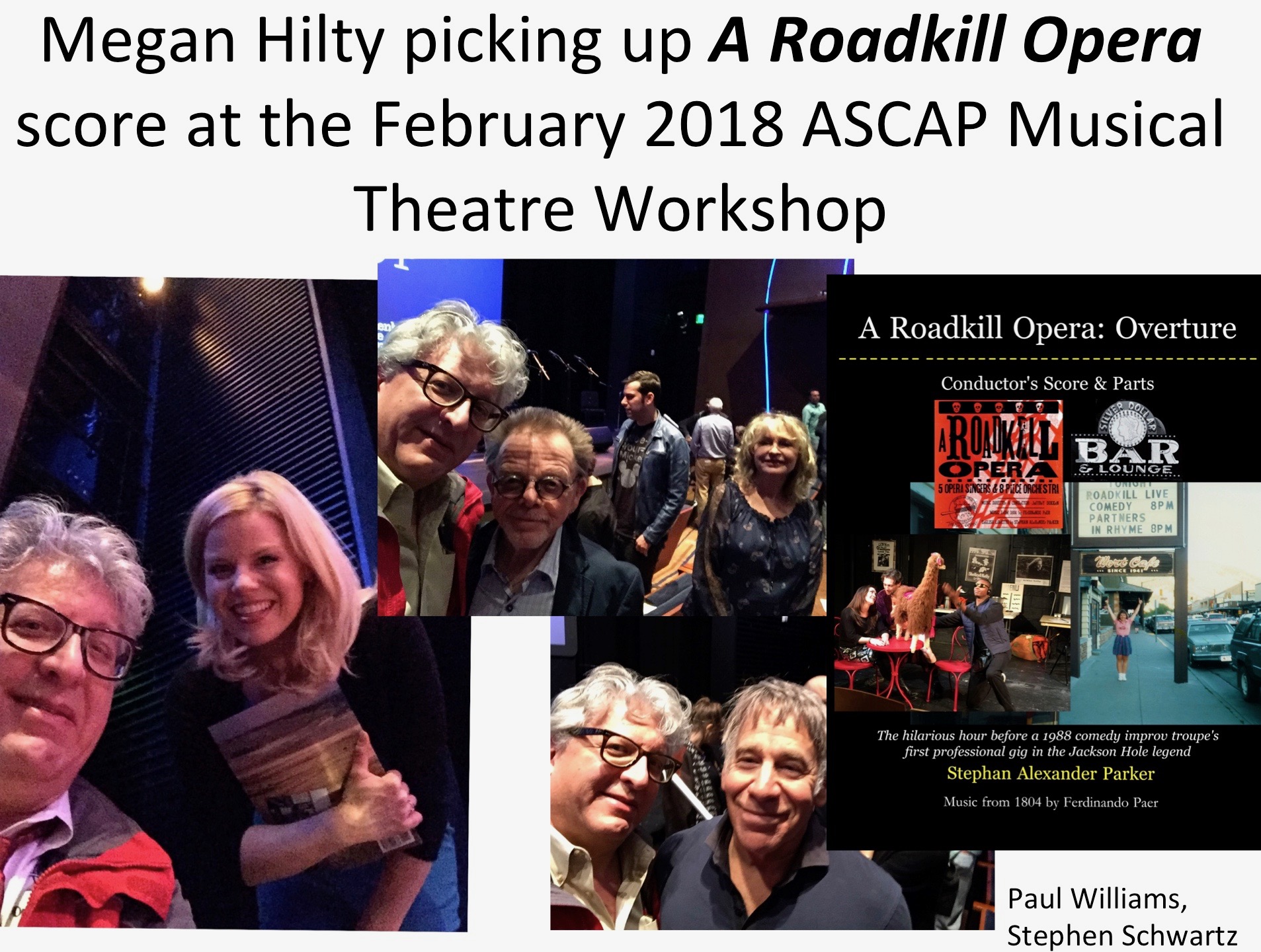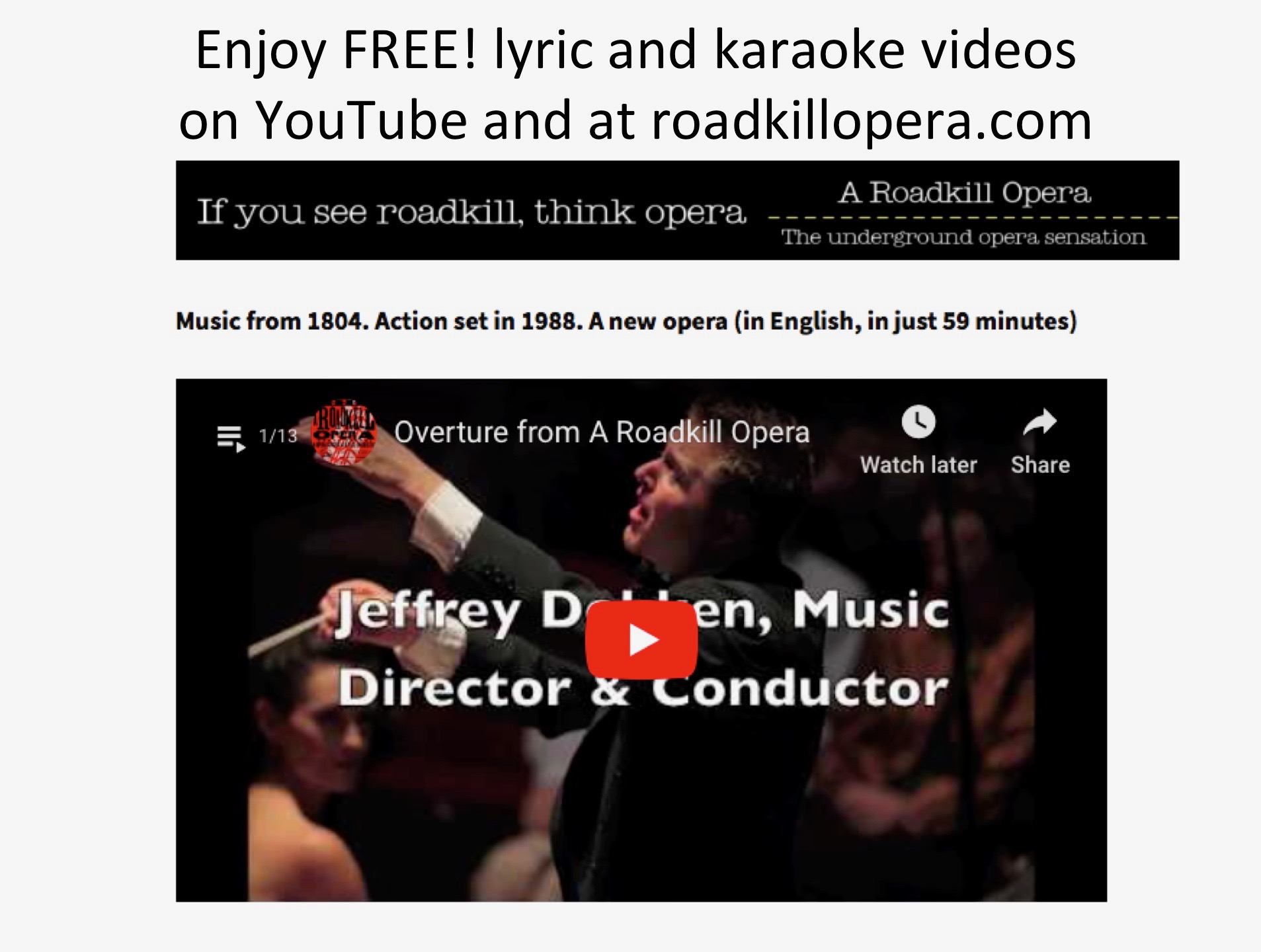The anniversary of the first time that a substantial portion of the music from Ferdinando Paer’s 1804 opera Leonora was publicly performed in the United States seems a good day to look at the long, strange trip that led to that being in the form of the June 9, 2012 stand-and-sing at Artomatic 2012 in Crystal City, Virginia, of Stephan Alexander Parker’s A Roadkill Opera under the baton of music director and conductor Jeffrey Dokken.
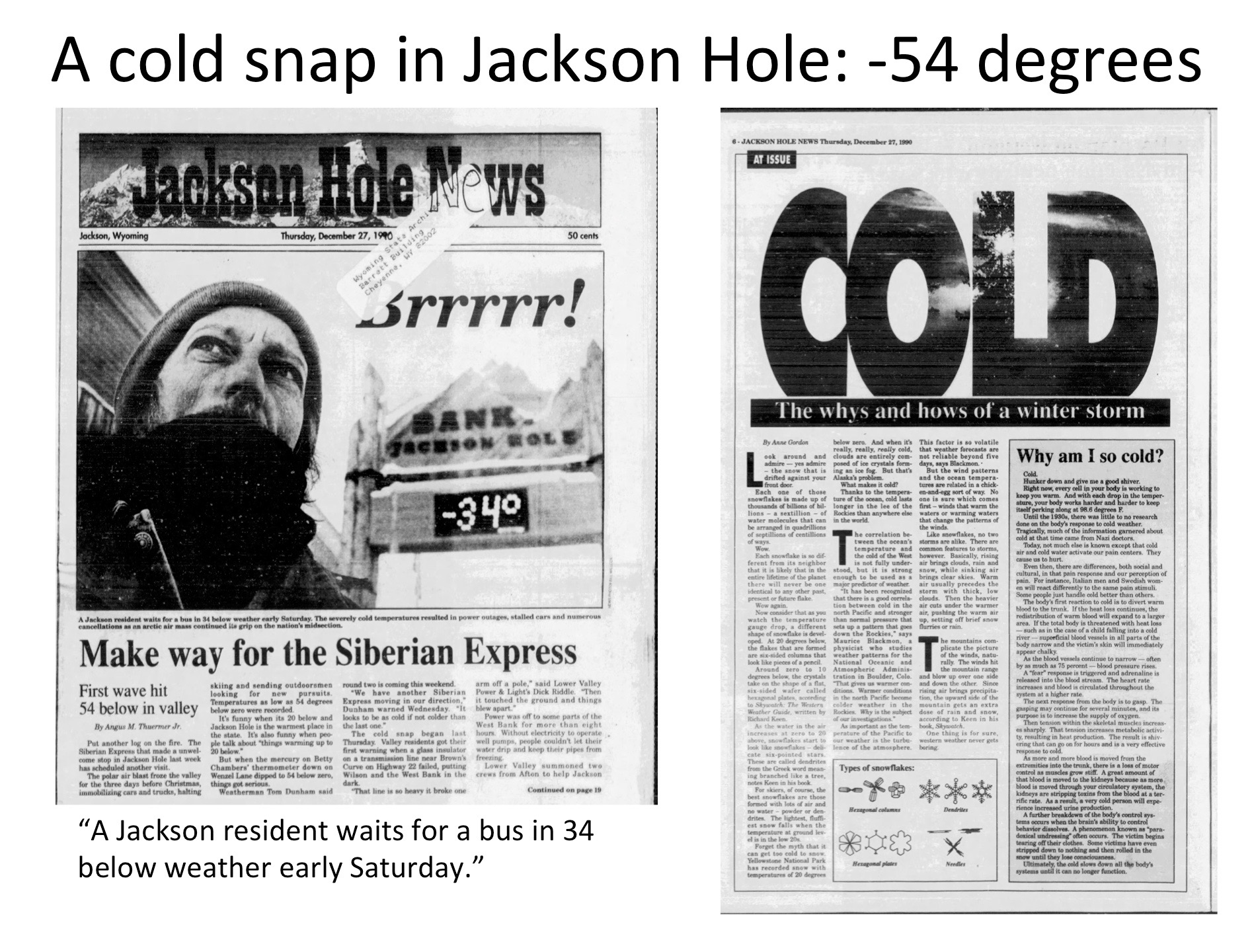
It started with a cold snap in Jackson, Wyoming in the winter of 1984-1985. For a week, the temperatures dropped to the minus 50s at night and only got to the minus 30s during the day. It was too cold outside for aerobic activity. I couldn’t afford to join a gym, and since I had just moved there to be a ski bum, I couldn’t afford to lose my aerobic capacity, either. Jackson sits at 6,237 feet above sea level. What to do? As I recall, there was a blurb in the newspaper about how Arthur Fiedler, longtime conductor for the Boston Pops, had been in great aerobic condition due to conducting. There was room for me to wave my arms around in my rented room; it would be more fun if I did it to music, so I hunted through my cassettes for the longest piece of music I had.
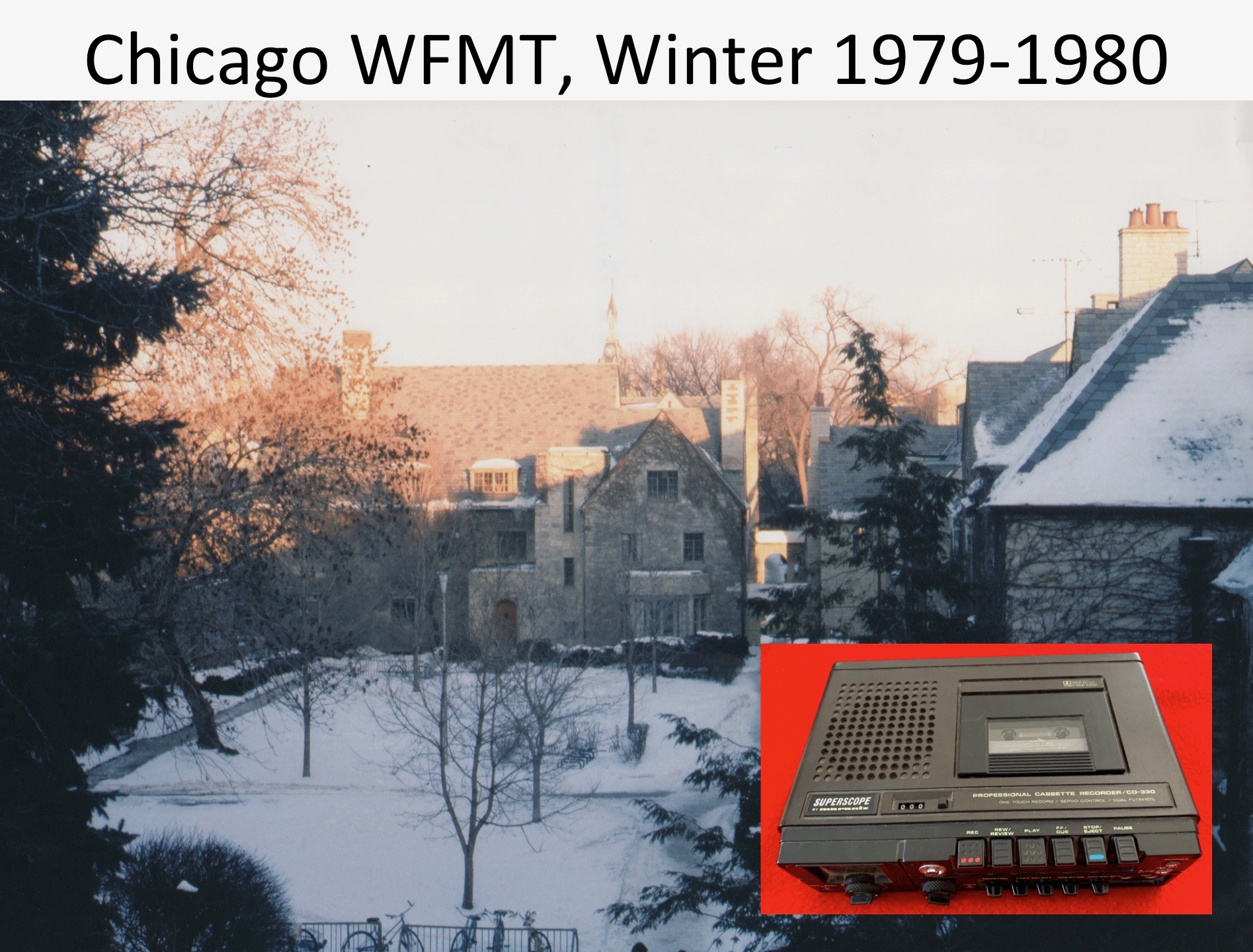
My favorite classical cassette had been recorded off a broadcast by Chicago’s WFMT during the winter of 1979-1980. I hauled that out and waved my arms to it for a couple of days. It was fine, but wouldn’t it be even more fun if I was also following along to a printed score? I could barely read sheet music, perhaps that way I could learn to read music better. So I grabbed my cassette and took it to Mountunes, a music store in Jackson, to order a score. I asked them to listen to the cassette, which sounded like Mozart to me, to figure out which score to order. The staff didn’t know what opera I had recorded, but they were pretty sure it wasn’t Mozart. Over the next several years, whenever I traveled, I would stop into music stores (and even the Steinway piano showroom in Manhattan) and play my cassette for the staff. Nobody could identify the opera or the composer. However, they all agreed on the place to go to ask the most knowledgeable music staff on the planet.
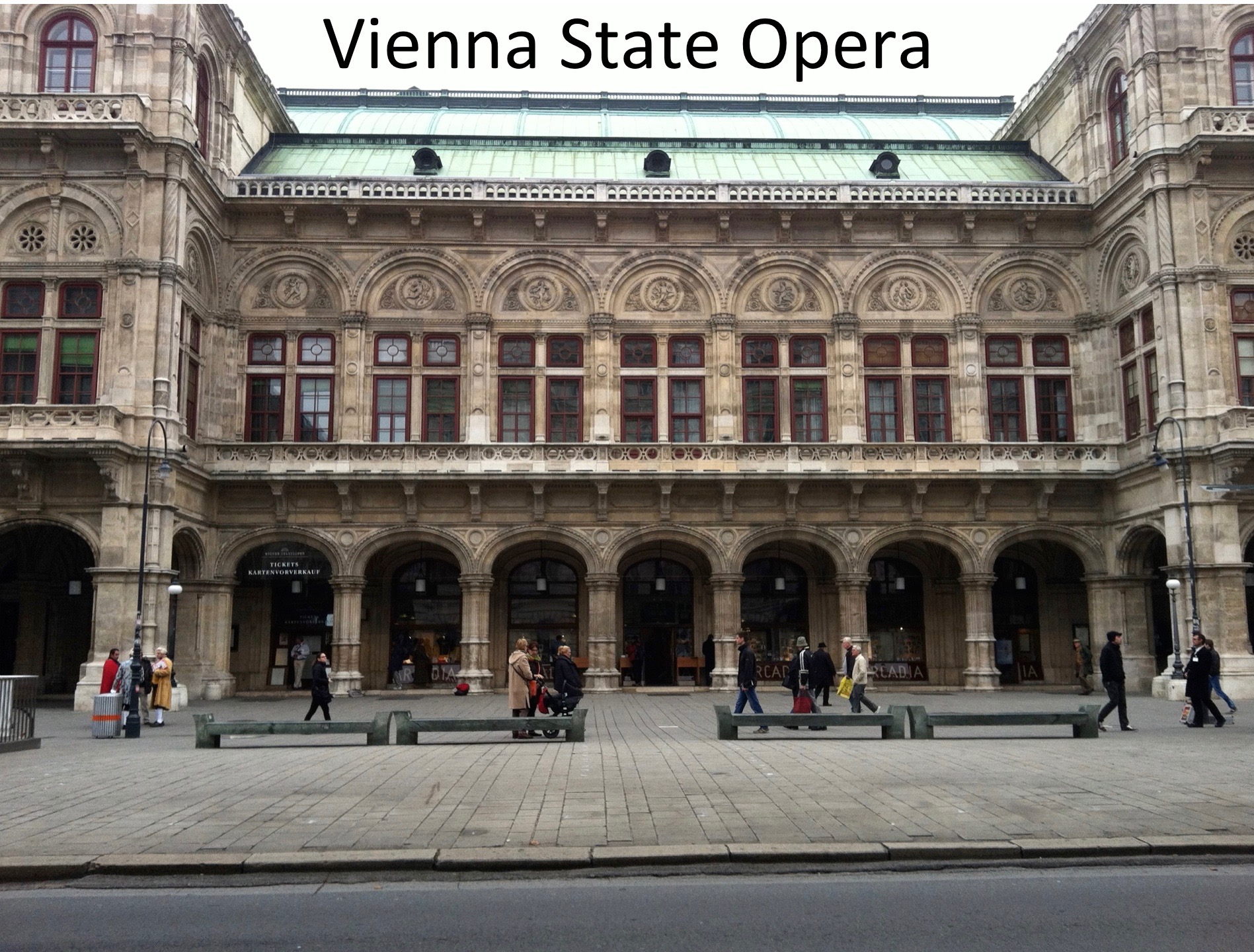
That was the Weiner Staatsoper, the Vienna State Opera House, in Vienna, Austria. Like I was going to go there. Then, in 2003, an opportunity to travel to Vienna came up. As I was packing, I remembered to toss in my cassette. Once in Vienna, I stopped at other music shops as I made my way across the city. None of them recognized the opera on my cassette. I played it for the staff at the Wiener Staatsoper: they didn’t recognize it either. Then they said that some of their former staff had opened a CD store across the street. I then played the cassette f the staff at da Caruso; they didn’t recognize it, either. But one of them said “My boyfriend knows everything about opera. Give me your cassette and I will take it home and play it for him.” It was my only copy—but I figured it was now or never, so handed it over to him. Sure enough, the next day there was a message at my pension: come on in, we have identified your opera. When I got to da Caruso, the boyfriend had written down not only the name of the opera and the composer, but also who sang each of the major roles and the Decca catalog number. I asked the staff at da Caruso if they had a copy in stock. They laughed. “That was the only studio recording ever made of Ferdinando Paer’s Leonora. It has never been released on CD.” Okay, so can you order me the vinyl? They laughed again. “It has been out of print for 20 years.” The mystery was solved, but the obscurity of the recording had further piqued my curiosity.

So a month after the da Caruso staffer’s boyfriend had identified the recording as Leonora by Ferdinando Paer, conducted by Peter Maag and released on London Records, a Decca company, in 1978, I was relating the story about the chase for the recording’s identity to my friend Bob as we sat having sidewalk beers in Minneapolis. Bob said “You know, there’s a really good used book store across the street. They also have records. You should try there.” I said, yeah, right, like they’re going to have it. But they did! This was 2003, when radio stations were converting from vinyl to CDs. The local public radio station had dumped its entire set of vinyl, which was sitting (nicely organized, I should say) in the basement of the used book store. It was a boxed set with 3 LPs and what I learned is called a libretto, which is the Italian word for book, which is to say the lyrics. The libretto included with it both the Italian lyrics and their translation into English. I had been chasing this thing for a long time. It did not have a price marked on it. Nervously, while trying to appear nonchalant, I spoke to the clerk: gee, I was thinking about buying this old thing, how much is it? He opened the box and slowly looked through it, calmly closed it, and pronounced “nine bucks.” I paid cash, in case it was a mistake or in case he might decide to up the price while running a credit card. Once I had paid, I asked why nine dollars. “Three discs, three dollars a disc. Nine dollars.” Whew!
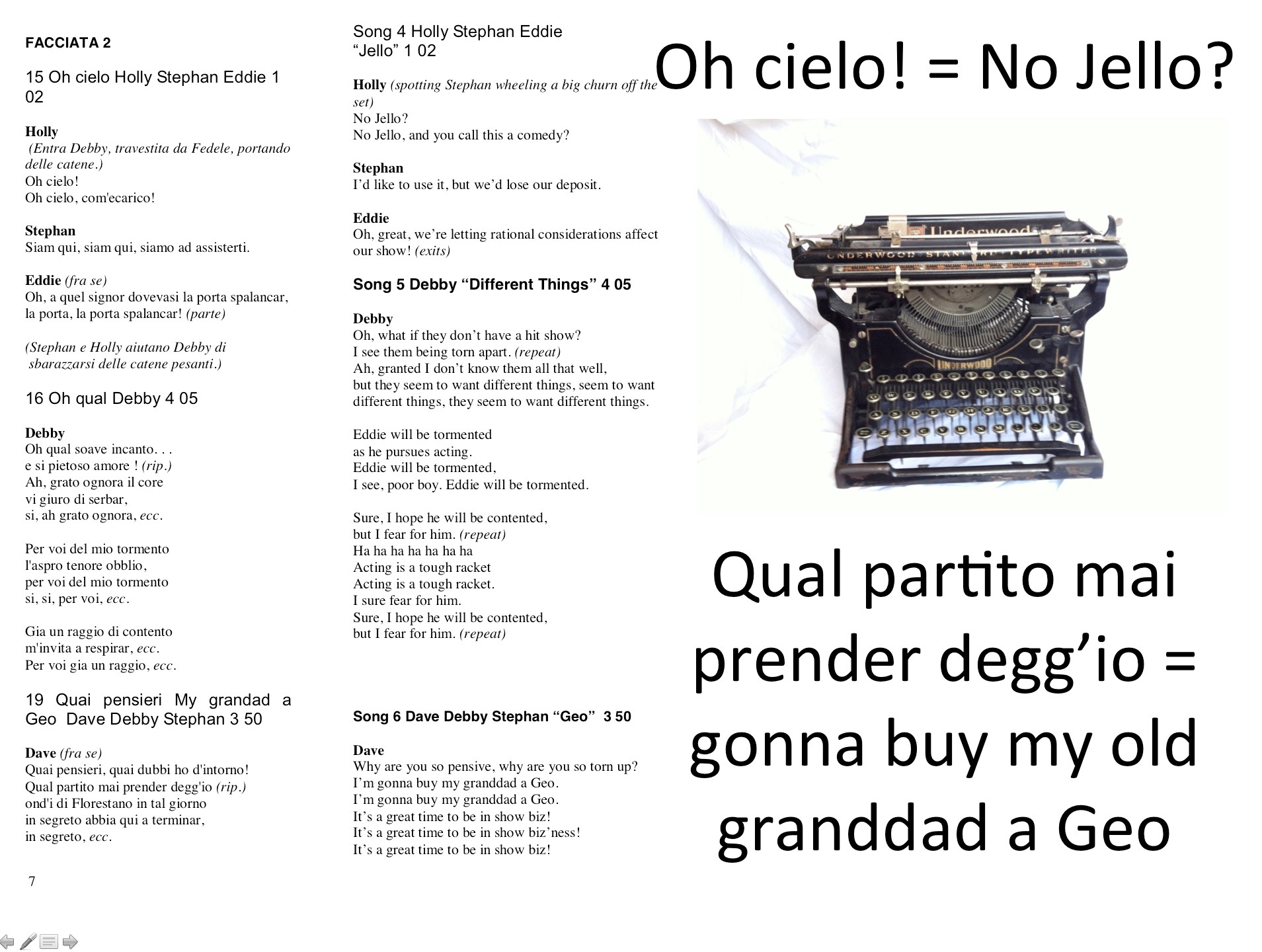
Now, after a 25-year mystery being solved, I had a copy in my hot little hands. What should I do with it, just listen to it? I’d been listening to it on cassette for 25 years, so that would be anticlimactic. I should dosomething with it, but what? The first step, I figured, should be to really listen to it, and to do that I needed to rip it from vinyl to a CD. I bought a turntable by mail order to do so, and found when I had transferred the three discs that I had only been listening to the overture and the first act: there was a second act that I had never heard. I hated it! The first act was all pretty much in major keys and highly melodic. To my untrained ear, the second act sounded all minor key and depressing. So I attempted to rip just the first act and overture to CD, but it wouldn’t fit. Circa 2003-2004, a CD’s capacity was only about one hour and eight minutes. So I cut out the speak-singing portions from the first act, what I learned much later are called recitatives, and got it under 1:08. Now when I listened to the shortened version, it sounded like an overture and twelve songs. To me, that sounded like a show. If I was going to write it up as a show, what should it be? If I made it just a shortened version of Leonora, what would be the point? The shortened version had three men and two women in it. What should their characters be, what plot? I printed out the Italian lyrics from the libretto and tried to phonetically fit English lyrics to them while listening to the CD. “Oh cielo!”, which refers to the skies or the heavens, sounded to me like “No Jello?” That meant comedy. Another lyric in Italian sounded to me like “I’m gonna buy my old granddad a Geo!” My first new car had been a Geo. That was in the 1980s. 1980s, comedy, three men and two women. Hmm, I had a possible story to fit.

From 1988 to 1992 my comedy partner “Weird Ed” Bachtel and I worked together in a legal partnership, first starting and hosting the long-running open mic night at the Spirits of the West Saloon and starting July 4 weekend in 1988 our first stage show: Roadkill!!! Live! It was a sketch comedy revue that ran for eight weeks that summer at the Wort Hotel’s Silver Dollar Bar’s Showroom (technically the Greenback Lounge, but everyone just called it the Showroom). The libretto circa 2003/2004 had three men and two women, and our show 1988-1992 had three men and one woman, plus a woman who ran the box office. Could the twelve songs be fit to those five characters? I used the search and replace function to replace the names of the Italian characters with the names from the troupe and box office of the Roadkill On A Stick Frozen Foods Theatre Company and started writing. To provide some drama, I needed to focus on the most dramatic time in the run—opening night, when nerves were highest. For a dramatic climax, I needed a plot twist. Well, we learned during the 1988 show that after our run the showroom would be torn down. That was pretty dramatic. It paralleled a standard improv premise I’d often seen and sometimes participated in: you are stuck on a burning el platform (the el being the elevated train). Using dramatic license, the information about the theatre being torn down would come during the opening night. Another script parameter: I would add no dialogue. The show would be sung-through, with only Paer’s music and lyrics where his librettist had lyrics. That would also keep the script short. And finally, I decided to set the show in real-time during the final hour before the first show. That would also simplify staging, costumes, etc.
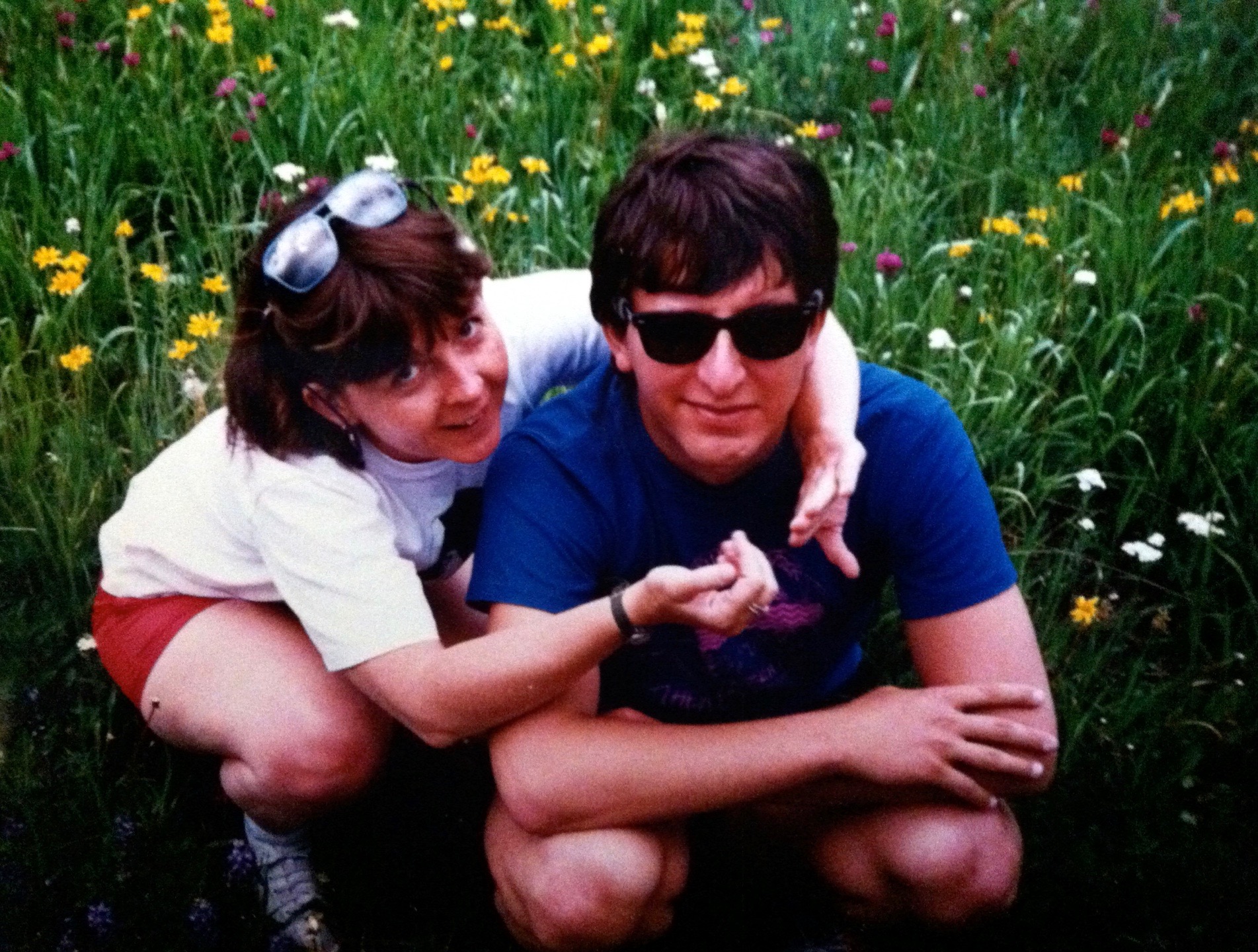
When I finished the script (by ear to the CD), I wanted to get a feel for how it might play as a show. I put my new lyrics as supertitles in a video mockup over the Italian recording. If you didn’t speak Italian, you could watch the video and think you were seeing it simply translated into English. At least, that was my intent. It seemed to work pretty well when I first showed the mockup of Opening Night: A Roadkill Opera in One Act at Artomatic 2004 at the old National Children’s Museum in Washington, DC.The Warehouse Theatre said to let them know when we were ready to stage the show, they had space. With that motivation, I reached out to my high school friend Brad, then a music rights attorney in Nashville, to ask Decca for permissions to use the backing tracks from the 1978 recording for a community theatre stage production. Remember how the FM station in Minneapolis had dumped its vinyl for CDs? Well, about this time Napster was busy cannibalizing the record companies. Decca didn’t return Brad’s calls or letters. Like the rest of the recording industry, they were too busy losing their shirts to illegal file sharing. Without access to the rights to the only recording, I was stuck, I put my script aside and focused on promoting the photographs of the woman from the Roadkill!!! Live!box office, Debby “DJ” Choupin. Three years later, while preparing for her exhibit at Artomatic 2008, a miracle: the Bamford Opera announced that Paer’s Leonorawould have its U.K. premiere in the fall. Paer premiered Leonorain Dresden it 1804. It only took 204 years to make it across the English Channel. I began to correspond with the fellow preparing the conductor’s score and parts for the London premiere.
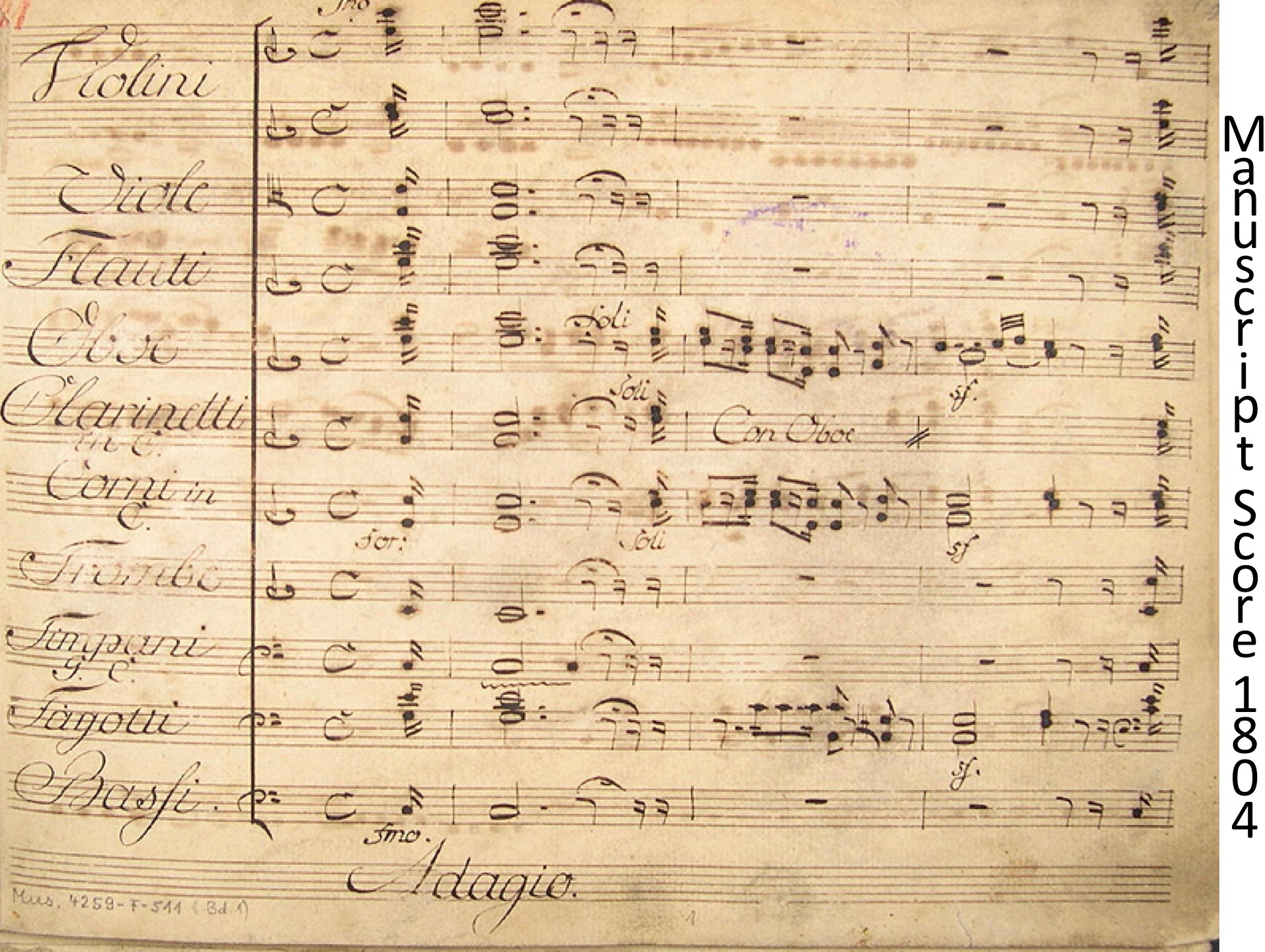
Like Peter Maag, Brian Clark had accessed Paer’s manuscript for Leonoraat the library. He was kind enough to send me a PDF of the conductor’s score, but my music reading skills weren’t good enough to tell whether the score he working from was the same as the one that Maag had recorded. I asked Deb if she wanted to go to London so I could hear this thing. She said yes! (p.s., we are still married!)
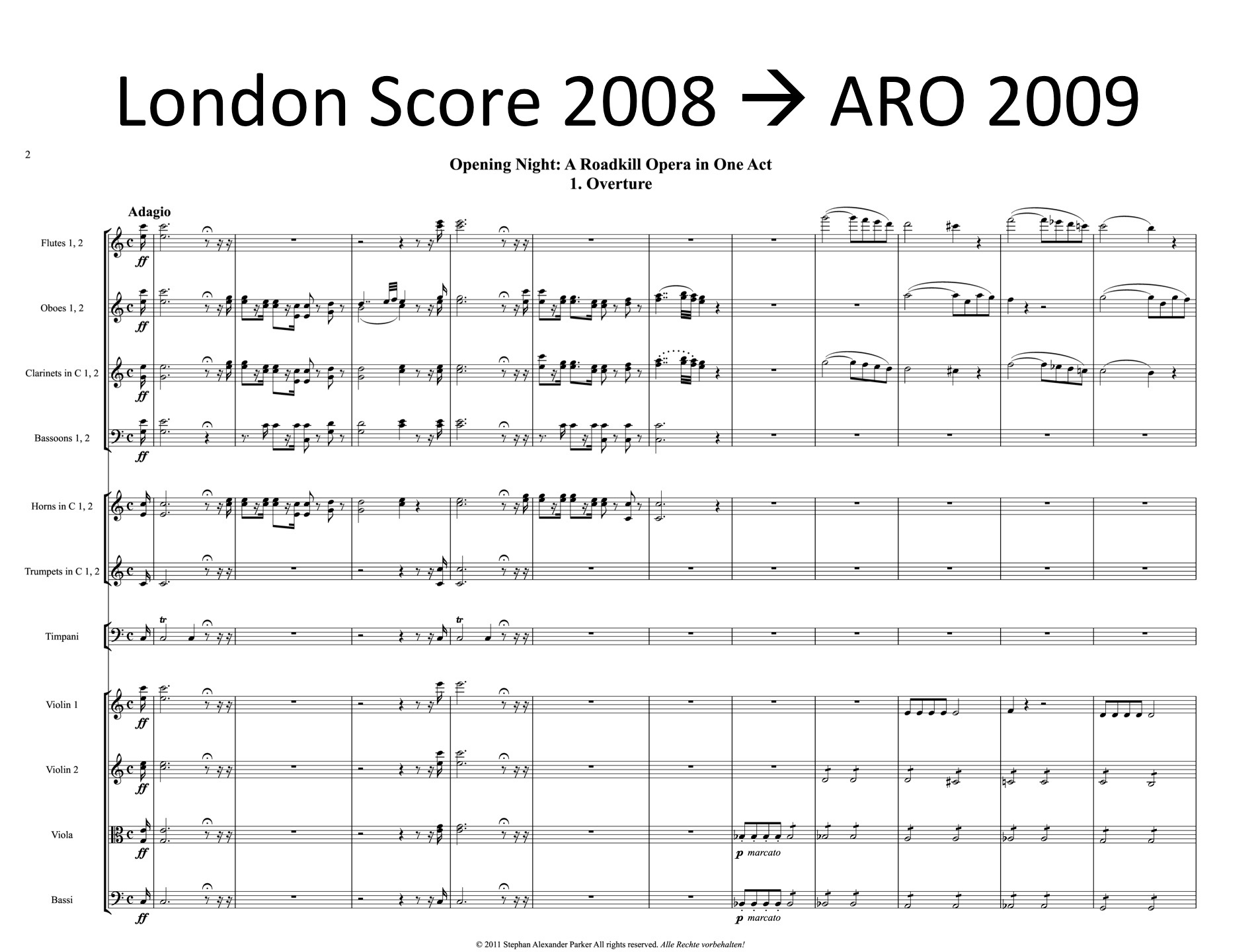
Our last night of a week in London was at St. John’s Smith Square, where the London Chamber Orchestra (the world’s first chamber orchestra, founded in 1948) was accompanying the Bamford Opera singers. As I followed the score and my script, I was also visualizing what the show might look like on stage. This thing might work! The 2008 arrangement didn’t sound quite the same as the 1978 recording (it turned out that Brian Clark and Peter Maag had accessed different versions of Ferdinando Paer’s Leonora, from different libraries), but it was mighty close and awfully available. Now I just needed to get the rights to use the score and parts prepared for the Bamford Opera by Prima la musica! for the London, UK premiere of Leonora in 2008. I had hoped to speak with the arranger at the London performance, but alas, he had not journeyed down from his home in Scotland. I wasn’t really sure how to broach the subject. The subject matter of my show might not be to the taste of this person who made his living converting library manuscripts of classical music into modern, performance-read scores and parts. Leonora had been by far the largest undertaking in the history of Prima la musica! I dragged my feet, until I learned that there would be an Artomatic 2009—now I had a deadline. I spoke with Brian Clark by phone and let him know I was interested in acquiring the score and parts for the overture and the first act only, for a derivative work. How much might he charge for me to have a copy like that, with all associated rights? I asked “how much will it cost?” He asked “how much are you willing to pay?” I thought about it, and about how much work it would take to do an independent transcription from the library manuscript, and made what I considered to be a fair offer. Fortunately, he agreed. I later learned that his deal with Bamford had been on a per-performance use of the score, with a projected 10 performances, but Bamford had cut back and only actually had two performances. I came out of the blue with this deep interest in this obscure work. There was another twist, however: Brian didn’t want me send him the payment in Scotland, but instead wanted me to wire the money to a guy in New York. This wasn’t that long after 9/11, so I asked him to explain why. The answer was satisfactory—he had collaborators who transcribed music out of libraries all over the world for Prima la musica! to sell to clients all over the world. In order to avoid currency conversion costs, he wanted me to pay his guy in New York in American dollars. I was okay with that. So now, a mere 6 years after the staff at da Caruso had identified the music I had been chasing, and 30 years after I had recorded Leonora off the air from Chicago’s WFMT, I had the music files. Brian Clark of Prima la musica! suggested I acquire a software program called Sibelius for preparing printable copies of the parts (“that’s what professionals use,” he said); it would also allow me to edit in the lyrics. Brian also suggested acquiring better simulation software for listening to the score—I chose Garritan Personal Orchestra. I now had way more powerful software than I would have needed if I could read music better, but I was very happy to be able to continue to work by ear—now, working with the actual score, which I could use royalty-free, to take the place of the mockup over the 1978 recording. There were other capabilities of Sibelius that come in handy later.

At Artomatic 2009 at Navy Yard, DJ exhibited her photographs and I advertised for a producing organization. I began working with the Sibelius software to fit the lyrics note-for-note to the score. To track my progress, I counted the number of bars of music in the score and the number of bars that had lyrics. That would be 1,208 bars. Times two; one of the bonuses from the arranger was a piano/vocal score that could be used for rehearsing singers. So, 2,416 bars of lyrics. I guess its just as well that no producing organizations stepped forward at Artomatic 2009, as it took me another two years to fit my written lyrics to the orchestral and piano/vocal scores. The lyrics from 2003/2004 were fine story-wise, but there were too many words. In transcribing by ear to the 1978 studio recording, I had created about a third too many syllables relative to the note by note score. Opera singers (and their conductors) need it note by note. That took time. Once I had the score and parts completed in the summer of 2011, I needed to register them with the U.S. Copyright Office at the Library of Congress. That, too, was a process. It also seemed like a good idea to join ASCAP, the American Society of Composers, Authors, and Publishers.
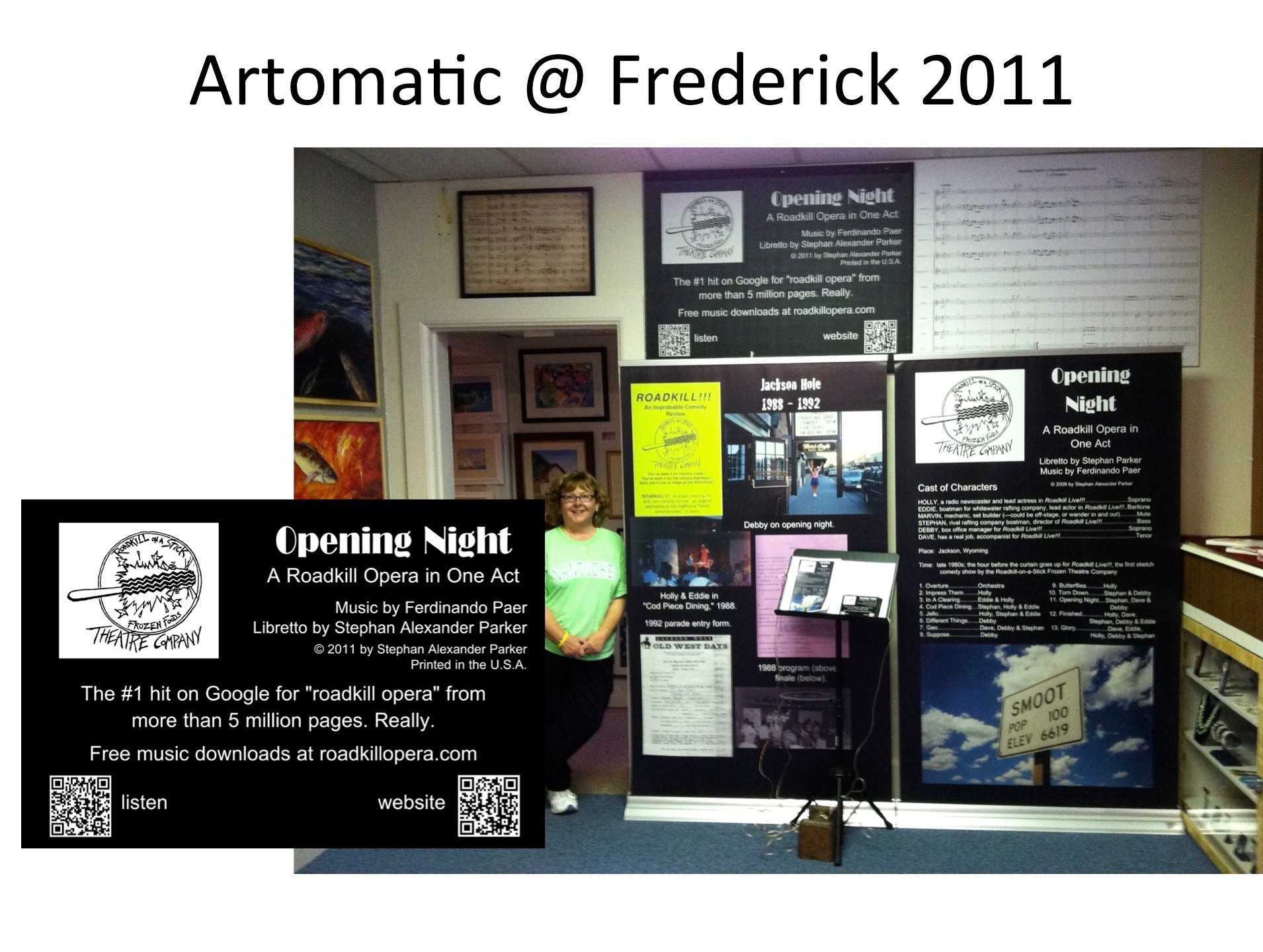
Remember that 2004 mockup? I brought that on my laptop and brought popup banners and large prints of the score to my exhibit at Artomatic @ Frederick in the fall of 2011. Also, there was freeware at the time that allowed me to create the first karaoke versions of the songs from what I was calling Opening Night: A Roadkill Opera. When I loaded these things online, I found that using a search engine to look for “Roadkill Opera” returned 5 million search results—and mine was number one! That seemed worth promoting, so I made up postcards and blew them up big for my Artomatic exhibit. Now that I had a score and parts ready to roll, surely I could find a producing organization?
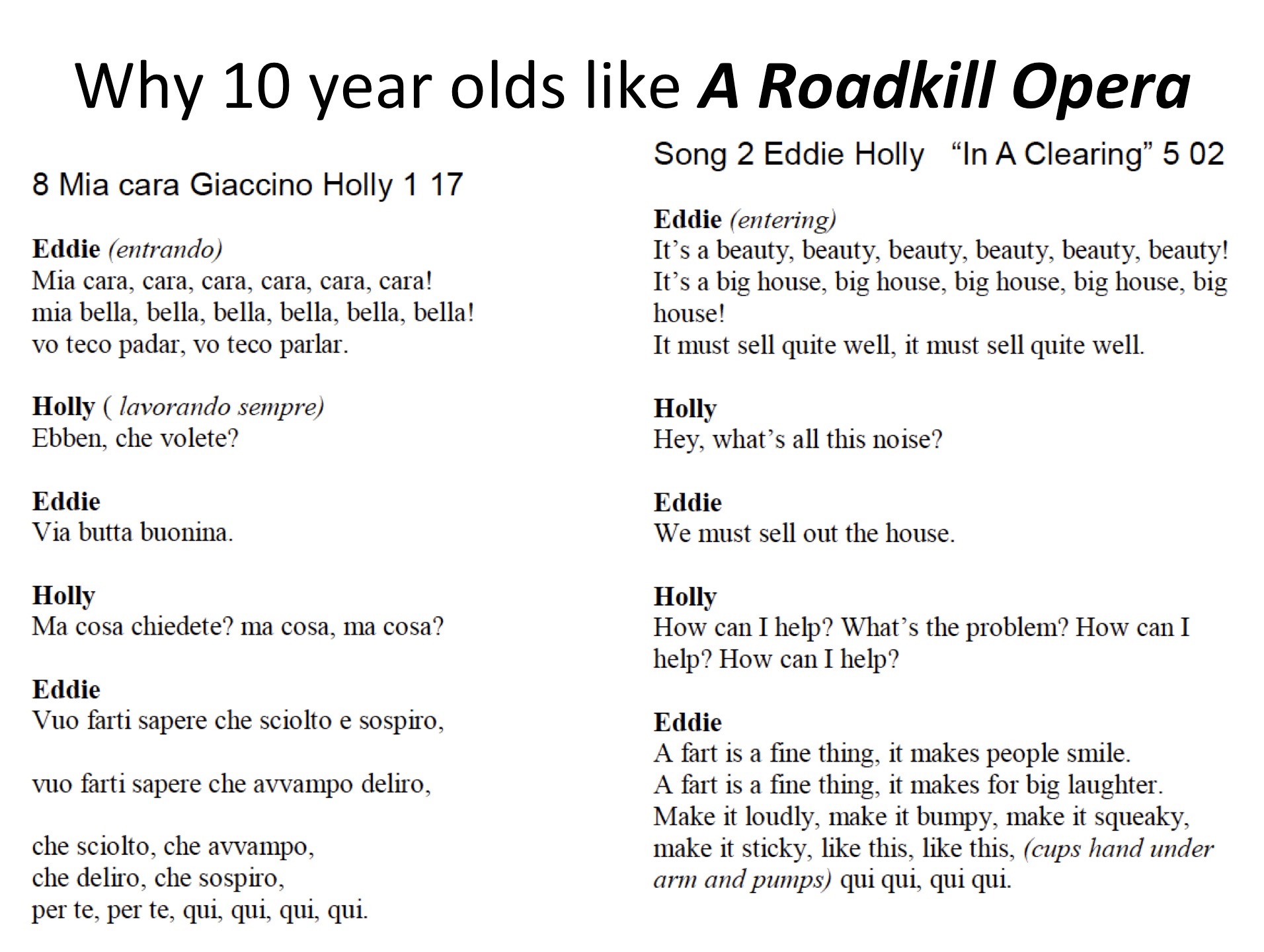
During a “meet the artists” night at Artomatic@Frederick in the fall of 2011, I was standing in my display while the mockup played on my computer and a powered speaker. A 10 year old girl was standing there, listening and following the lyrics. One of the newspaper reviews of the Bampton Opera’s Leonora had noted that 10 year olds had left the theatre humming the melodies from the show. This seemed like validation of that finding. Then the little girl’s father walked over to the Roadkill Opera mockup and the little girl said “Look, daddy, it’s an opera about farts!” A Roadkill Opera is not entirely about farts—there is one song—“In A Clearing,” the second song, the third musical number if you count the overture—that consists of a discussion/debate/back-and-forth about how to make the show funnier. Oh well. Another reason for 10 year olds to like A Roadkill Opera.

Then a funny thing happened in early 2012. I was in the office of a colleague, Martine Micozzi, at my day job, and I noticed what looked like a music case on the floor of her office. “What’s that?” “Oh, that’s my flute.” “Why do you have a flute at work?” “I moonlight at the Symphony Orchestra of Arlington. We have rehearsal tonight.” “Hmm. I just wrote a new libretto to music from an obscure opera. Would you mind taking a look at it?” “Sure.” Once she saw it, Martine said “Gee, do you mind if I show this to my conductor?” “That would be great!” It was great—Jeffery Dokken was so taken with the score that he began lining up singers for a possible workshop even before we met. He was willing to serve as music director if I could secure rehearsal and performance space. Fortunately, after three years hiatus, there was an Artomatic scheduled for Crystal City, and Jeff was able to rehearse the singers and orchestra on various stages, and hold a stand-and-sing workshop concert on the Cherry Smash Stage on June 9, 2012. There’s a single-camera video shot by Ben Ganz (now the co-founder and CEO of Vego Pictures in Hollywood). It was sprawling room only. The people at Artomatic were extremely supportive and helped with the publicity. I ordered a bunch of swag and even got Hatch Show Print, the oldest letterpress print shop in the country, to produce a commemorative poster. The designer recommended dropping the Opening Night from the title, which is how the show got renamed A Roadkill Opera. Tee shirts, aprons, bumper stickers, bottle openers, and posters were available for sale. I even got to play hammer on 2×4. We workshopped the show with an 8 piece orchestra and 5 singers. That’s how we learned that it needed a 10 piece orchestra, 5 singers, and a non-singing comedian. There were very few recommended change to the score and lyrics, which is what we were after. “What do we need to do next?,” I asked Jeff? “We need to go into a studio and cut a demo. Then we can pitch the show to orchestras around the country.” “How long will that take?” “We can knock it out in an afternoon—three or four hours.” “Great! Let’s do it!” So we booked a studio—but that’s another story.

Anyhow, many thanks to everyone connected with Ferdinando Paer’s Leonora along its long, strange trip to A Roadkill Opera. It’s been a lot of fun, and we aren’t done yet!
